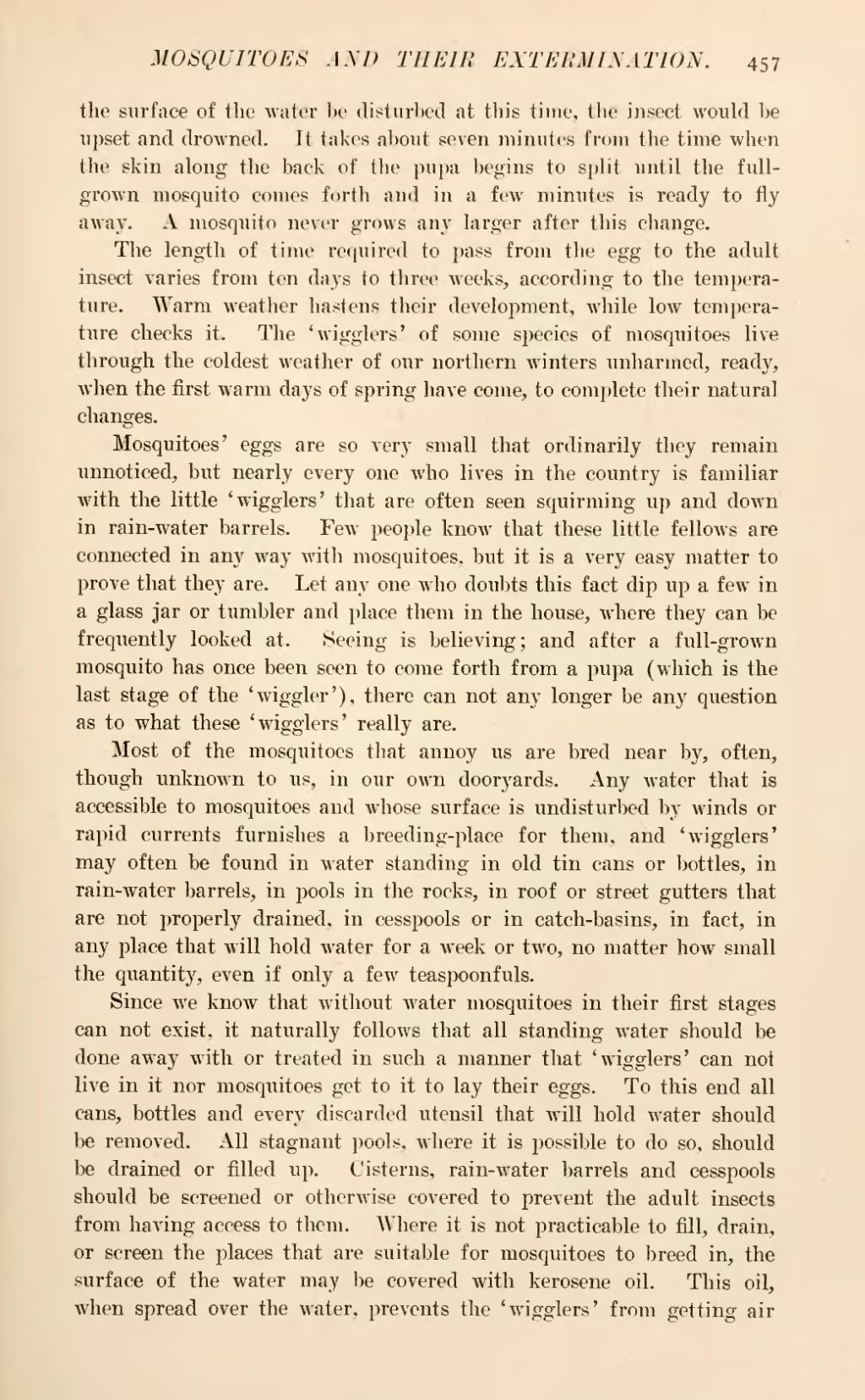the surface of the water be disturbed at this time, the insect would be upset and drowned. It takes about seven minutes from the time when the skin along the back of the pupa begins to split until the full-grown mosquito comes forth and in a few minutes is ready to fly away. A mosquito never grows any larger after this change.
The length of time required to pass from the egg to the adult insect varies from ten days to three weeks, according to the temperature. Warm weather hastens their development, while low temperature checks it. The 'wigglers' of some species of mosquitoes live through the coldest weather of our northern winters unharmed, ready, when the first warm days of spring have come, to complete their natural changes.
Mosquitoes' eggs are so very small that ordinarily they remain unnoticed, but nearly every one who lives in the country is familiar with the little 'wigglers' that are often seen squirming up and down in rain-water barrels. Few people know that these little fellows are connected in any way with mosquitoes, but it is a very easy matter to prove that they are. Let any one who doubts this fact dip up a few in a glass jar or tumbler and place them in the house, where they can be frequently looked at. Seeing is believing; and after a full-grown mosquito has once been seen to come forth from a pupa (which is the last stage of the 'wiggler'), there can not any longer be any question as to what these 'wigglers' really are.
Most of the mosquitoes that annoy us are bred near by, often, though unknown to us, in our own dooryards. Any water that is accessible to mosquitoes and whose surface is undisturbed by winds or rapid currents furnishes a breeding-place for them, and 'wigglers' may often be found in water standing in old tin cans or bottles, in rain-water barrels, in pools in the rocks, in roof or street gutters that are not properly drained, in cesspools or in catch-basins, in fact, in any place that will hold water for a week or two, no matter how small the quantity, even if only a few teaspoonfuls.
Since we know that without water mosquitoes in their first stages can not exist, it naturally follows that all standing water should be done away with or treated in such a manner that 'wigglers' can not live in it nor mosquitoes get to it to lay their eggs. To this end all cans, bottles and every discarded utensil that will hold water should be removed. All stagnant pools, where it is possible to do so, should be drained or filled up. Cisterns, rain-water barrels and cesspools should be screened or otherwise covered to prevent the adult insects from having access to them. Where it is not practicable to fill, drain, or screen the places that are suitable for mosquitoes to breed in, the surface of the water may be covered with kerosene oil. This oil, when spread over the water, prevents the 'wigglers' from getting air
